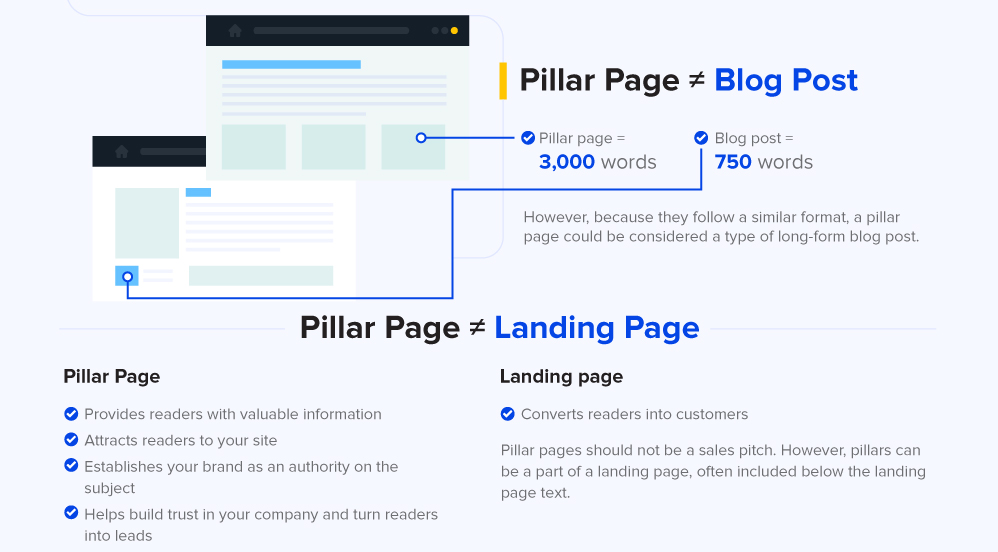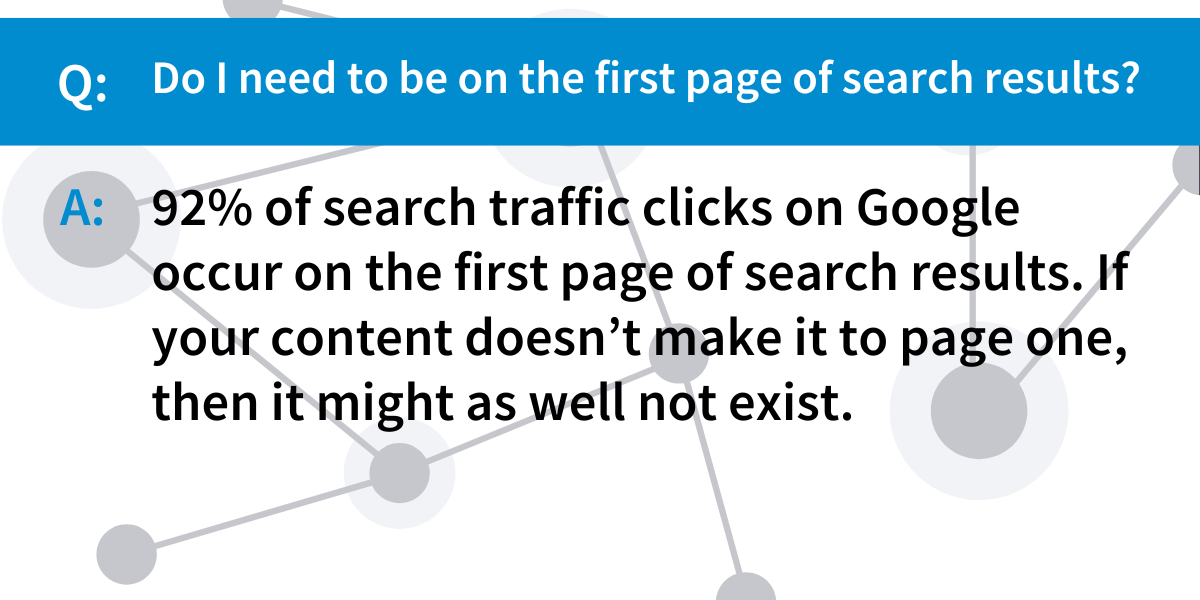What Does the DemandJump Company Do? A Short Guide to Our One of a Kind Pillar-Based Marketing Platform
June 13, 2022 •Clare Sheehan

All marketers know, you have to be inventive to get ahead in this field. And with intense competition and increased customer expectations, thinking outside of the box is the only way to consistently reach and delight your target audience. So, what’s the latest and greatest tactic to help you rise above the noise? That’s easy, it’s pillar-based marketing (PBM). What is pillar-based marketing? You might ask. Well, as the masterminds behind PBM, DemandJump has all of the answers.

Sure, you’ve probably used traditional SEO keyword tools and keyword stuffing, but we’re willing to bet that left you with inconsistent results. Although these tactics and tools make big promises of increased engagement and page one results, they often fall short— DemandJump’s PBM platform marketing strategy actually comes through.
A pillar-based marketing strategy is all about creating a network of content that’s perfectly catered to your audience’s search habits and content preferences while being optimized for search engine algorithms. Our PBM strategy was designed to unwind the complex network of searches, so you can identify exactly what your audience is looking for and adjust your marketing efforts accordingly.
Have we got your attention? Interested in learning more? You're in luck! In this blog, we’ll take a deep dive into the PBM structure and show you how the DemandJump platform makes it all work.
What Are the Components of PBM?
A complete PBM strategy consists of 16 pieces of content that link together to create a content network:
- 1 Pillar Page
- 3 Sub-pillar Pages
- 12 Supporting Blogs
At DemandJump, we’ve developed a unique linking strategy to help increase your authority on search engines.
All Blogs and Sub-Pillars link back to your Pillar Page, the first nine Supporting Blogs have corresponding Sub-Pillars to link back to as well, and the last three blogs only link to the Pillar Page again. Let’s explore each of these pieces of content a bit more below:
Pillar Pages
As the first and largest piece of content in your PBM strategy, your Pillar Page informs the rest of the content you write. A Pillar Page is around 2,500-3,000 words, and offers a broad overview of a chosen topic. This topic could be anything related to your business, but should tie in directly with your existing marketing goals. Here’s an example of a Pillar Topic: “Peanut Butter and Jelly Sandwiches.”

Sub-Pillar Pages
Sub-Pillars are the second level of content in your PBM strategy. At 1,500-2,000 words in length, Sub-Pillars are used to describe a topic from your pillar in more detail. So a Sub-Pillar to our hypothetical “Peanut Butter and Jelly Sandwich” Pillar Page could be “Types of Jelly.”
Supporting Blogs
Supporting Blogs are the last pieces of content in the PBM strategy. At 650-750 words, these pieces are much shorter than Pillar Pages and Sub-pillars. Supporting Blogs cover more narrow topics, and often answer commonly searched questions related to your Pillar Page and Sub-Pillar topics. A Supporting Blog for our “Peanut Butter and Jelly Sandwich” Pillar could be “What Is the Best Peanut Butter Brand?”
What Is a PBM Vendor? And How do PBM Platforms Work?
As for PBM vendors, we’re the one and only! Using complex AI technology, we created the DemandJump platform to gather the world’s search data and tell you exactly what content to create. Our PBM platform identifies the right topics and keywords for you to use in your PBM content to create a content network. Once posted to your website, this content network establishes your brand as an authority on your chosen Pillar topic, boosting organic traffic and generating more leads. When it comes to actually writing the content, our consumer insights and content outlines tools will tell you exactly what your audience is searching and what your competition is ranking for.

What Is One Benefit of Pillar-based Marketing? It Sends Your Content to Page One
The fact remains, 92% of search traffic clicks on Google occur on the first page of search results—if your content doesn’t make it to page one, then it might as well not exist. Traditional SEO tools, keyword stuffing, and guesswork just don’t work in this hyper-competitive marketing atmosphere.
So, what types of companies are using PBM successfully? Even though PBM is fairly new to the marketing world, our customers are already experiencing significant wins with their PBM content. In fact, our DemandJump customers see an average ROI of 229% after just 60 days of using our PBM platform. Read their stories here.
At DemandJump we believe you should be able to create content that ranks and delights your customers with confidence! Pillar-based marketing for page one results, it’s what we do. Try it out for free!
Featured Articles
Categories
- Attribution Tracking (13)
- Channel Optimization (11)
- Consumer Insights (68)
- Content Marketing (251)
- Data Science (8)
- Digital Marketing (6)
- Digital Transformation (26)
- Enterprise (10)
- Lead Generation (14)
- Market Intelligence (8)
- Marketing Analytics (39)
- Marketing Attribution (57)
- Marketing Management (153)
- Marketing Operations (86)
- Organic Search (222)
- Paid Search (52)
- Pillar-Based Marketing (63)
- Programmatic Advertising (9)
- SaaS Content (14)
- SaaS Marketing (29)
- Search Marketing (111)
- SEO Keyword Research (28)
- SEO Pillar (18)
- SEO Strategy (46)
- SMB (5)
- Website Content (12)


